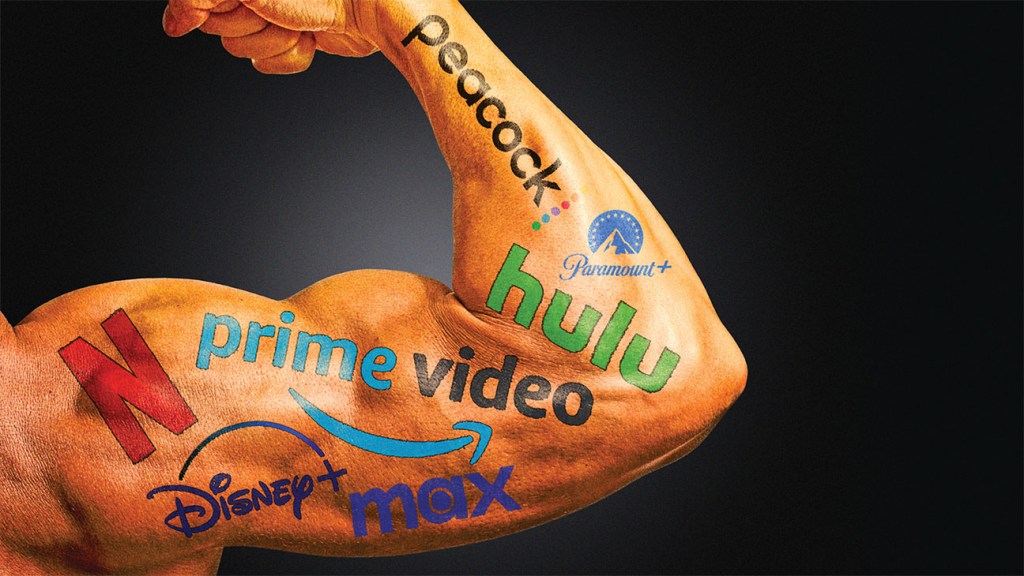As the streaming industry has come down from its blank-check era, it has rediscovered a time-honored way to keep revenue flowing: licensing TV series and movies to other outlets. Acquired shows are among the most watched programming on streaming — it’s the year of Suits, after all — and shows with high episode counts help keep users inside a streamer’s ecosystem.
Just as reliable is the uproar when streamers remove shows for tax write-downs or other cost savings, whether it’s a signature series (à la HBO’s Westworld being removed from Max last year) or originals that seemingly never had much chance to find an audience (as with Disney+ and Hulu purging Willow and Y: The Last Man, among others, this year).
The perception, fueled by big content removals, is that streamers are ruthlessly paring back the number of movies and series available to users and at the same time raising subscription rates. But the data doesn’t back that up. Among the seven biggest subscription video-on-demand services, only one — Amazon’s Prime Video — has seen its overall catalog shrink between January 2021 and October 2023, according to an analysis by streaming aggregator Reelgood (and Prime Video’s library still dwarfs those of its competitors). Netflix, Peacock, Hulu, Max, Disney+ and Paramount+ all have net gains to their libraries over that time period.
Those top-line figures, however, don’t tell the whole story. Paramount+ almost tripled the volume of titles it made available to subscribers between January 2021 and October 2022, going from 1,199 shows and movies to 3,030, according to the Reelgood study — only to cut that number back by almost half in the past year. Peacock, which was only six months old in January 2021, has been the most aggressive in adding titles, growing its catalog by nearly 4,000 films and shows since then.
Even Max, the poster child for coldly paring back its offerings, has a bigger library now than it did a year ago — though that also comes with a caveat. The Warner Bros. Discovery-owned service has cut its film library by 15 percent (390 movies) in the past year, per Reelgood’s analysis, but its TV catalog has more than doubled in size (from 667 shows to 1,365) with the addition of hundreds of shows from Discovery and its sister networks.
Library programming is the longtime foundation of streaming: Netflix wouldn’t have become the behemoth it is now without its beginnings as a place to find episodes of shows that weren’t on traditional networks. In a huge data dump on all of its programming from the first half of 2023, the company said licensed series and movies accounted for 45 percent of time spent on the service in those months.
Across the broader streaming landscape, that number is even bigger, according to Mitch Metcalf, a former ABC and NBC research and scheduling executive who now heads MEI, a media consulting firm. Metcalf analyzed some 22,000 streaming titles tracked by Nielsen in October and November and found that almost three-fourths of streaming time was spent on licensed shows and movies.
Much of that viewing is concentrated at the top, Metcalf notes: The 1,000 biggest titles — less than 5 percent of what’s available in the United States — account for about 70 percent of all viewing time on the streaming services Nielsen measures. “Almost half of them had virtually zero viewing — they just barely registered,” he says. “So right off the top, what are you really offering? What do people actually consume? You can take half off the table.”
Netflix’s own figures released Dec. 12 point to that, as well: Of the 18,000-plus titles for which it provided data, more than 3,800 (about 21 percent of the total) registered fewer than 150,000 hours of viewing over six months despite a global subscriber base of 238 million users at the end of the second quarter.
Which is not to say niche programming is dead: Free, ad-supported services like Tubi, The Roku Channel and Pluto TV have been growing by serving up more obscure programming — for relatively cheap licensing fees — and selling ads against it. “Then it’s a business,” Metcalf says. “You’re meeting a demand and getting paid for it, and you’re making an advertiser happy by delivering audience in a show they want to be in.”
He adds with a laugh, “It has echoes of broadcast and cable.”
As the walled-garden model at other streamers begins to ebb, they’re also looking back to an earlier time in the industry and licensing to Netflix. Suits had been on Peacock for a couple of years before it exploded with its Netflix debut; legacy HBO shows ranging from Band of Brothers to Six Feet Under have also seen a viewing bump after Max started sharing rights with Netflix. “It’s a reflection of our recommendation system and what we do best,” Netflix co-CEO Ted Sarandos told reporters on a Dec. 12 call. Just don’t expect Netflix to become a seller anytime soon. “I don’t know that it would happen in reverse,” he said. “I think we can add value when we license content; I’m not positive that’s reciprocal.”

Courtesy of Amazon; Emerson Miller/Paramount+
This story appeared in the Dec. 15 issue of The Hollywood Reporter magazine. Click here to subscribe.




